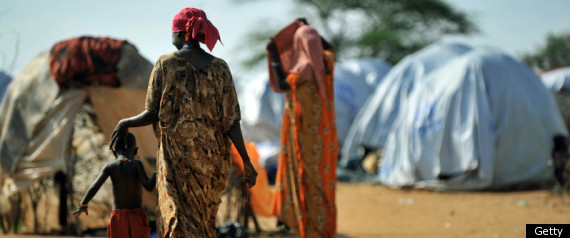
First Posted: 11/29/11 06:04 PM ET Updated: 11/29/11 06:43 PM ET
When Al Jazeera's staff met Ibrahim Aden in Kenya's Dabaab refugee camp, he had just lost his one-year-old son. Five days earlier, he had buried another of his sons. A third child, sick and exhausted, was taking shelter in a nearby tent.
At least 450,000 Somalis have crossed the country's border with Kenya in recent months, fleeing one of the worst famines East Africa has seen in decades. For many, help came too late. US officials estimate that more than 29,000 children under the age of five have died in the crisis. Tens of thousands Somalis have been killed, and at least 250,000 people are still facing the threat of starvation.
In the first episode of its new season, Al Jazeera's Fault Lines traveled to Somalia to investigate why saving the famine-stricken region has proven so difficult.
Somalia faces four harsh realities, Fault Lines explains; the most severe drought Eastern Africa has seen in 60 years; 4 million people facing starvation; Al Shabaab militants, who control large parts in the south and center of the country, blocking aid from reaching those in need; and huge travel distances for those seeking aid. "Access to the crisis is so bad that the UN says it doesn't know how many people died," Al Jazeera notes. "But it's certainty in the tens of thousands, most of those children."
Why did the international community fail to see the crisis coming? How are international regulations on aid distribution affecting the response to the crisis, and does U.S. counterterrorism policy influence the distribution of aid in Somalia?
Watch the full first episode of Fault Lines below to learn more.
